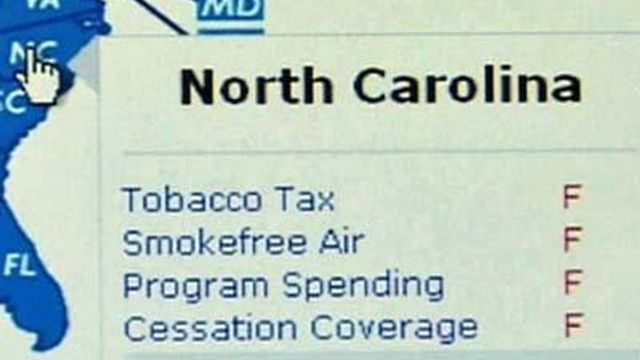Study: N.C. failing in tobacco control
The American Lung Association's "State of Tobacco Control 2008" report showed about 23 percent of adults in North Carolina smoke.
Posted — UpdatedTobacco is linked to the top causes of preventable deaths in the United States, including heart disease and many cancers, and costs the country $193 billion annually.
The association evaluated the state in four categories:
- Tobacco Control Program Funding – The state, along with funding from the Centers for Disease Control and Prevention, allotted about $18.5 million for 2009. The CDC’s best-practices level would be $106 million.
- State Smoking Restrictions – The state has no provisions for private workplaces, childcare facilities, restaurants, bars, retail stores or recreational/cultural facilities.
- Tobacco tax rate per pack of 20 cigarettes – North Carolina charges 35 cents, which is about 20 cents per pack to low. The ALA suggests 50 cents per pack in federal tax.
- State Cessation Coverage – Under the state Medicaid program, various medications are covered for those trying to quit smoking. Counseling is not included, and minimal co-payments are required. Only certain medications are covered for state employees. Those employees also face limits on the duration of coverage and an annual limit on attempts to quit.
Economically, smoking has cost the state $6.2 billion, a figure based on health expenditures in 2004 and annual loses in workers' productivity from 2000 through 2004.
No state in the entire U.S. received solid A’s in this year’s report.
The report showed government’s policies on smoking cessation coverage are weak or non-existent.
• Credits
Copyright 2024 by Capitol Broadcasting Company. All rights reserved. This material may not be published, broadcast, rewritten or redistributed.





